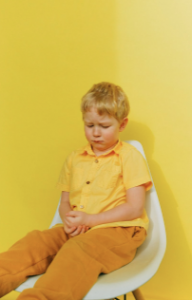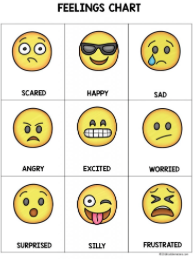Tools to Help Decrease Your Child’s Emotions
By Erica Marriaga, MSW, LCSW

Do you find yourself not knowing how to help your child calm down? When you do try and help them, does it sometimes make the situation worse? Many therapists have found that helping children to understand their triggers and physical reactions in and outside of the body allows parents/caregivers to proactively decrease their emotions. We can call this a reset plan.
Help your child RESET their emotions
According to the Nurtured Heart Approach, A “Reset” begins when the child stops the negative behavior and quiets down.
Often, parents and guardians attempt to use warnings or drastic punishments such as yelling to reduce negative behavior. According to the Nurtured Heart Approach, these behaviors are “energizing” which can energize the child to negative behaviors. In other words, since they are getting a response, the behavior is more likely to continue.
However, when using “resets,” the child is given a “non-energizing” response to the negative behavior. For example, if the child were talking while their teacher was talking, the teacher would instruct the child to “Reset.”
She would then turn her attention to students who were paying attention until the child had stopped the negative behavior. When the negative behavior (talking while the teacher is teaching) stops, the teacher praises that child for making a positive decision to learn. This energizes the child’s positive behavior and prompts the child to repeat this good behavior in the future.
The child is congratulated on successfully extinguishing the negative behavior and successfully completing the reset.
“The power of a reset is not in how punitive or drastic it is, but rather in how ‘clean’ it is.”
A clean time-out is de-energized, with a rapid return to the pursuit of success — much like a penalty in a video game or sports. Specific positive feedback is given! (Nurtured Heart Approach)
Help your child prepare in advance for negative emotions
As adults, we understand that negative emotions are part of life. One way we can

help our child cope with unpleasant situations and the emotions that arise is to make a plan. I can assure you that you will feel more confident in the ability to help regulate a child’s emotional reactivity.
A chart like the one below might be a helpful exercise for you and your child to complete together. You can be as creative as you would like, which might also allow for a fun experience all around.
| Triggers | Physical Reaction | How I Calm Myself Down | How You Can Help Me to Calm Down |
| Not being listened to | Become nauseous | Count to 10 | Ask my teacher for help |
| Lack of privacy | Shake my hands and legs | Read a book | Talk to an adult |
| Feeling Lonely | Cry | Go for a walk | Hug from parent |
| Night time | Laugh | Hold a comfy blanket | Use a skill together |
| Being teased or picked on | Turn red | Take a break | Help distract |
First, together with your child, list out their triggers — the things that make them emotional in a negative way that usually leads to negative behaviors (anger, sadness, and frustration are big ones). You can even use pictures of emojis to help them visualize and mirror the way they are feeling. It is helpful for children to understand Emotion Recognition.

Next, consider what happens to your child physically when they experience that trigger. This can help them recognize when they are upset and name the emotion behind it. Once they understand what they are feeling, they are better equipped to take steps to calm down. What happens to you when you become frustrated? Do you tense up, start sweating, or cannot sit still? It shows that you are human when you can relate.
Once you have a good idea of what happens to their body when they are upset, the next step is to create a list of ways they can help themselves calm down. Let them lead the way as you make this list together. This will increase the likelihood of them following through. It might also be helpful to let them know when you notice them self-soothing on their own without realizing it.
Finally, make a list together of ways YOU can help them calm down. This may vary widely from one child to another. Some children may prefer to have a moment alone to process their emotions. Others may prefer to talk it out until they feel better.
You might consider making copies of this reset plan and leave it in different areas of the home. The consistency of reminders of this plan will increase the frequency of regulated emotions.
Reach Out to a Counselor to Help
As always, if you find yourself struggling in these areas, do not hesitate to reach out for help. A licensed therapist or counselor can help empower you to be your best self!
Erica Marriaga is a proud fur-mama of her one-eyed rescue dog, Toby and her new puppy, Tucker. She loves to spend time with her husband and bond with her family, nieces, and nephews. Erica is passionate and enthusiastic about her role as a therapist. EWC has locations in Manalapan and Shrewsbury, NJ, and accepts a variety of insurances.
Check out Erica’s professional bio here! Email Us info@exceptionalwellnesscounseling.com
Call Now: (908) 415-2042
NEXT STEPS & RESOURCES
- Are you ready to take your first step? Reach out to us.
- Do you feel you may benefit from counseling during this time? Take the first step.
- Interested in online counseling? Learn more
- Resources
